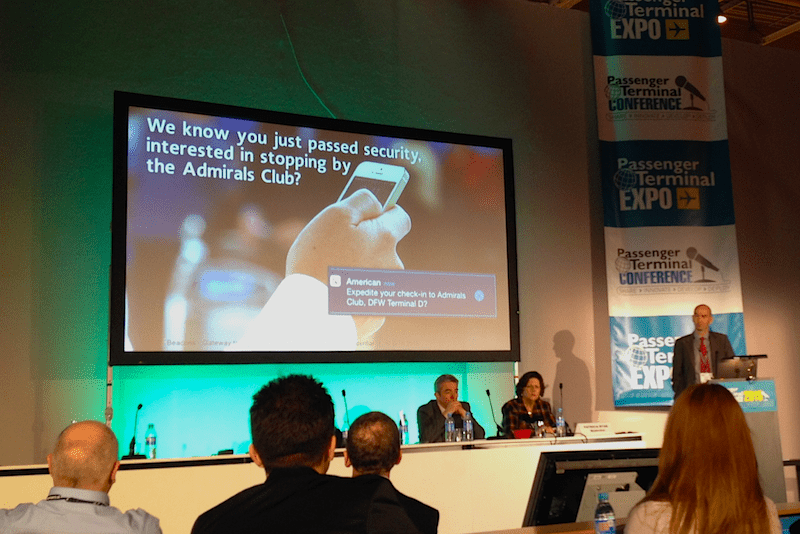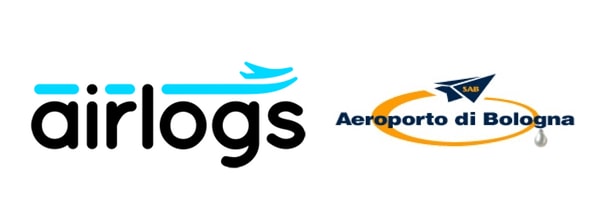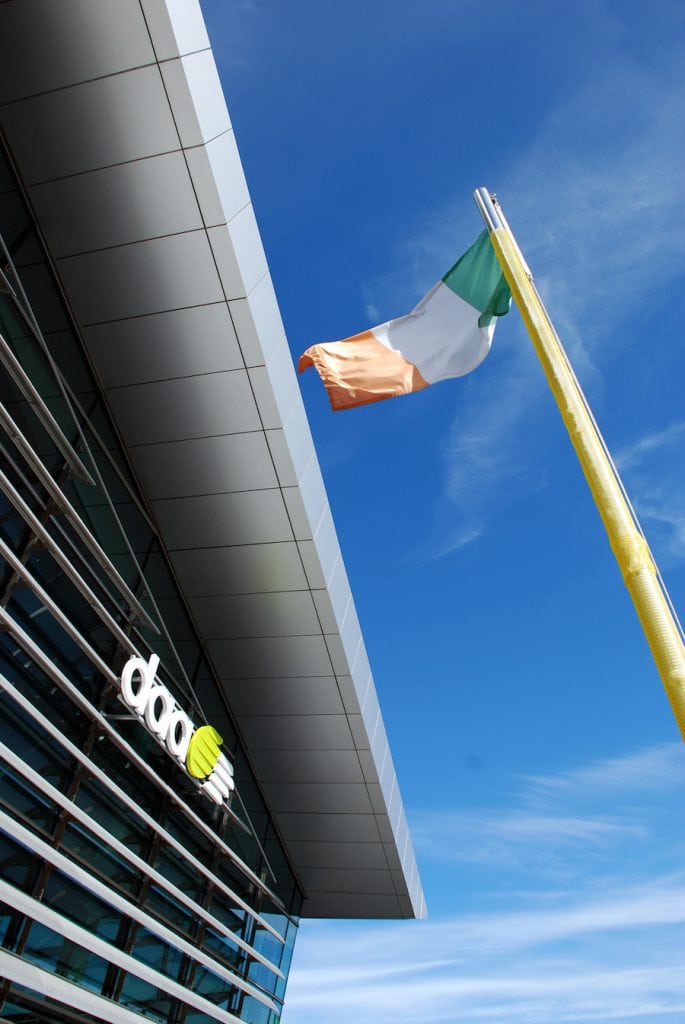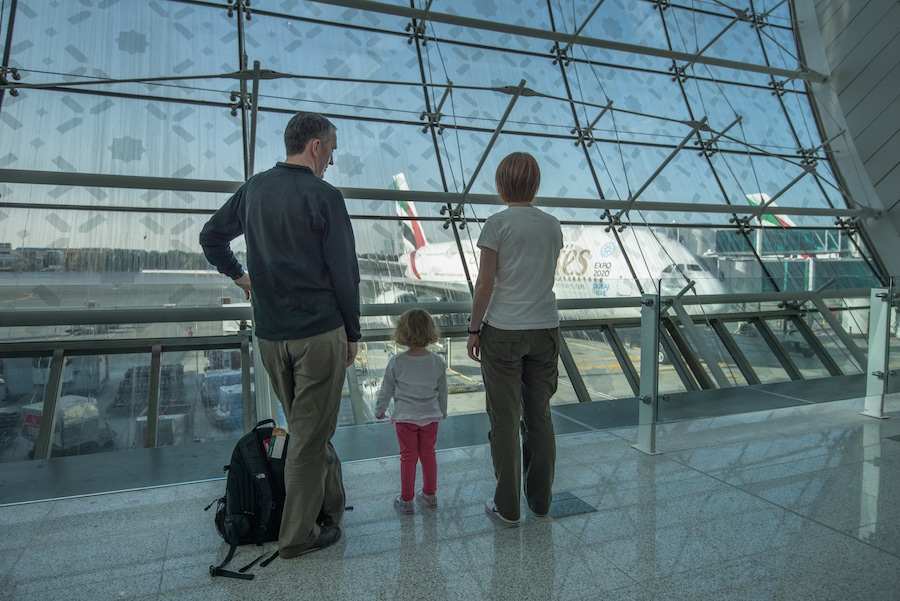Passenger Terminal Expo (PTE) 2015 took place on 10-12 March in Paris, this year I had the privilege of attending to PTE. One of the topic conference’s mainstream was Customer Service & Passenger Experience. The several visions and approaches I’ve seen, from the airport industry, will guide the following post’s content.

Photo credit: Heathrow Airport via photopin (license)
First of all, what is the Passenger’s Experience definition? We have a lot of concepts to clear first.
- When the journey starts? Well, depends of business or tourism trip, but we consider that booking (and previous relevant destination’s information) marks the journey’s beginning.
- When the journey ends? If everything is ok, at the hotel or home.
- So, we have a lot of processes between the beginning and the end. Booking, going to the airport (public transportation, taxi, car, parking…), check in, bag drop, security, dwell time (shopping, food & beverages, VIP lounges, internet, etc.), boarding, flight, (transfer), bag claim, going to destination’s hotel or home (parking->car, rent a car, public transportation, taxi), and back again (roundtrip). I do not see the journey from the perspective of “from airport’s curb-flight-airport’s curb” anymore, the passenger’s experience is like a project lifecycle, scope, planning (resources, time, money), execution, to the project’s ends and lessons learned.
- So, the passenger’s experience is about to have a very pleasant/predictable journey with the less stress as possible, enjoying the (experience) trip’s purpose from home to home.
With these concepts explained, at PTE2015 we saw a lot of approaches, philosophies and solutions, all of them very interesting and differ a lot in their implementation. Well this is a business, so these approaches tends to increase the airlines market share to their airports, increase the non-aeronautical revenues (shops, food&beverages, carpark, lounges, etc.) and reduce operational costs. The speeches about this topics generates a virtual debate between their approaches, setting the discussion if too much technology trends to depersonalize the passenger experience, or if the opposite trend, specially in low-mid airports, a very close attendance will have the more benefits in the passenger’s journey and sets a quality of service in cooperation with the local community.
THE TECHNOLOGICAL APPROACHES
With no doubt Beacons was one of PTE’s stars.
BEACONS
Big players, as SITA, are proposing several initiatives, one of the PTE’s stars, the beacons. A beacon is just a signal broadcaster based on Bluetooth Low Energy, a receiver, i.e a smartphone, can detect the beacon’s emissions and with the help of a backend (or local database) can trigger events for the user, ads, promotions, localization, indoor navigation/wayfinding, an user’s near boarding gate event for the airlines, it can be useful for tracing airport’s heat maps, etc. At PTE2015, there was a lot of expectation in the beacons speech, about 6-7 speeches mentioned beacons. A typical beacon deployment’s purpose is the Miami International Airport current implementation, with the SITA’s help. I had an interesting conversation with Kevin O’Sullivan, Lead Engineer at SITA, where we talk about the beacons as a new common use technology at airports (as self service kiosks) and how to put all the industry stakeholders for using the beacons infrastructure, airline, retail and airports, and a new emerging player, the 3rd parties, those that are disrupting models using APIs, information and legacy models for bringing new services. (i.e: UBER). In the following video Kevin talks about beacon’s technology.
Maurice Jenkins, Director of Information Systems at Miami Dade County, (Miami Airport, MIA), and Kevin O’Sullivan spoke about the beacons project in MIA airport, and showed a clear bet for this technology and a clear purpose of researching more applications and uses of these devices.
KLM has a video about this at Schiphol airport.
Renaud Irminger, Director of SITA Lab, also had a very interesting speech the day before, and introduces the beacon technology.
One of the most interesting speeches about beacons was the implementation of this technology in G. Marconi Bologna Airport, presentation conducted by his Operations Director, Paolo Sgroppo, and Giovanni Antinozzi Airlogs’ CEO www.airlogs.it). From my perspective, their approach is quite revolutionary, let’s socialize a solution’s problem, the baggage loosing, an worldwide problem that IATA put a date in the calendar (June 2018) for being resolved with the Resolution 753 (more about this).
A passenger buys a beacon, match it with his smartphone, put the beacon in the checked baggage (and/or in his cabin baggage) and the bag’s journey begins and its location too. How a passenger can trace its baggage? There are two ways:
- In airport’s places where there are not people or are restricted areas, placing fixed readers that detects when a beacon (baggage) passes by. Obviously, these fixed readers are placed along the BHS belts and carrousels. Well nothing new here, with modern BHS, we can do this too matching BSM messages with BagTags (QR or RFID). For limited BHS or for additional BHS functionality the beacon deployment is a very cheap solution, “..each fixed reader costs about hundred of euros”, says Mr.Antinozzi, “…and we don’t need too much of them in an airport”. Actually they don’t, they have one fixed reader in the Check In area, one in the internal BHS facility and another one in the Bag Claim area.
- In public areas, where passengers walks, in the bag claims areas, or in case of cabin areas trough terminal’s airside. If the passengers have the app (airports and airlines should embrace this and embed this API), the apps detects (anonymously) the beacons and transmit to the backend server, so, thanks to other passengers, the baggage owner can know where is his baggage, the baggage is near you in your destination’s carrousel or far far away in a 10.000 miles distance airport, but thanks to other passenger (or fixed antenna) at least you can claim it to the airline and locate it “precisely”.
A lot of questions arose me with this solution:
- Could 200 beacons fly in the aircraft’s cabin or in his baggage compartments’ or bays?
- Will the worldwide airports have free Wifi for the Data roaming problem?
- Will the airlines and airports work together for standardize this solution?
- Will the passengers cooperate and able to transmit helping with the beacons detection?
- …
In an industry with late adoption of technologies, this is a fresh air of trying to resolve problems with common devices (smartphones), with cheap hardware and with the application of social 2.0 paradigms for a win-win scenario. So, we will see in the future, the project need to grow, as the speakers said, they planned to deploy the solution in other Italian airports, so let’s see if people are part of the solution.
So, let’s “beaconize” the airports!
INNOVATION PROCESS AT AIRPORTS
This is just a reference to a great article published at New Airport Insider, managed by Jinan Alrawi (sorry Jinan for not meeting at Paris), about the innovation process driven by Heathrow. In this article Richard Harding Interim Head of IT Strategy & Innovation at Heathrow Airports, share how they operate and provide context as to why Heathrow Airport Holdings (HAL) formed an Airport IT Innovation team. He also introduces their mission, goals and detail processes and practices. Do not miss this new series of article at New Airport Insider. First of all, enjoy the article. Link to the article: How Heathrow Airport Innovates
THE HUMAN-TO-HUMAN WITH TECHNOLOGY TOUCH APPROACHES
A lot of airports and companies shows this approach, “let’s use the technology for repetitive work, and put humans to add value to the service”. The balance between technology and human-to-human interaction is diverse.
HOW TO SUPPORT AIRPORT’S QUALITY OF SERVICE BY AN ENTIRE COMMUNITY
This is the case of the Gerald R. Ford Airport, situated at the east of Lake Michigan (Lake Michigan is surrounded but at least 7 airports), serving Grand Rapids, Michigan. This 2,3MM passenger a year airport decided to bet for personal touch, making the difference with hospitality starting in the curbside (an agent can park your car, valet parking). They named Airport Ambassadors for passengers attendance, associating with specific programs as “Thanks again” (mileage rewards), “Therapy dogs” through terminal area and above all, the airport involved the Grand Rapids community for creating a “Total Visitor Experience” where the standards of attendance are equal at the airport, a city hotel or a Grand Rapids shop. This is de differential factor, a entire community trying to increase the visitors/passengers experience.
HOW TO DIFFERENTIATE FROM OTHER NEARBY AIRPORTS THROUGH HUMAN INTERACTION
Similar to Gerald R. Ford, the Halifax Stanfield International Airport, it is a 3,4MM pax per year airport located at Nova Scotia, Canada, they want to compete with the routes that fly to New Brunswick province also in Canada, and with northern USA states, as Maine, Connecticut and New Hampshire. This airport has a human interaction philosophy. Passengers interact with a lot of airport’s agents from the curb to the aircraft agents from airlines, security, information desks, shops, restaurants, etc. The airport decided to make the difference through the human interaction with passengers. It is their way for increasing market share as an International Airport in the north atlantic market. They also have a badge program for their employees in order to increase the service, their motto of quality service is “Happy, Helpful, Courteous, Caring and Kind”. As his VP Airport Experience said, Peter Spurway, “Airports are emotional places”.
AIRPORTS AS AN EMOTIONAL PLACES
Taking the Peter Spurway’s quote, “Airport are emotional places”, at PTE2015 we also listened another messages in this way, but with different perspectives:
Richard Gammon, HOK (www.hok.com) Firmwide Director Aviation + Transportation, made a great speech about the passenger experience in a operational reducing costs trend in order to maintain/gain competitiveness. As IATA’s Fast Travel Progamme states, by 2020 80% of the passengers will use self service paradigm in the journey’s processes. He said “Passengers often feel that they do not have control, or a little control, about their journey’s experience…. 42% of the passengers describe their journey stressful”. “We came from the golden aviation age, glamorous and expensive…” with a lot of human touch “… and now we have LCC models…” that democratize (cheaper) the aviation “…but stress the passengers”. Airlines keep the human touch with the premium services, business class, VIP lounges, etc. At the end, Richard’s vision, and HOK, is the combination of environment (airport design) + technology + people.
So, talking about the environment, technology and people, I bring you a partial implementation of this equation, where the first two variables have a greater weight than people variable has. Another interesting speech, for continuing this virtual debate with the other approaches. The speech was performed by the OTG’s CEO, Rick Blastein (otgmanagement.com) shows the combination of well designed food & beverages places, redesigning the airport spaces with a clear bet for the technology as a mean of interaction. They put iPads in a stand for every passenger for interacting with them, of course you can order the meal, pay the check (even with Delta mileage), play games and the flight statuses. Rick Blastein emphasized “It’s all about connecting with customers”
REMOTE/MOBILE INFORMATION AGENTS. PROVIDING JUST A QUALITY SERVICE, NOT GETTING YOUR MONEY AT DWELL TIME (MONEY WILL JUST COME)
We have two clear examples there, the Aeroports de Paris (AdP) pilot project at Orly Airport, and Munich Airport. After these examples, I’ll show a nice remote agent device.
AdP, represented by Antoine Legros and Ali Salehabadi, made a great presentation about the implementation of tablets for airport agents and their design thinking and UX processes (this is the way the things must be done). The AdP tablets info project is summed up with “Walking agents (mobile information staff) provides fast answers for the most common passenger questions”, the most complex questions are derived to the information desks. The information given by these mobile information agents is related to flights, gates, transfers, ground transportation, they can also scan boarding passes. AdP looked for three main objectives:
- Bring information where it is needed and give immediate answers to simple questions, no counter required.
- Interact with passengers with a personal touch, quality of service improved.
- Give additional tasks to staff, efficiency and productivity.
Munich Airport already launched a remote information agent in 2011 but it is a pleasure to see it again at PTE2015 speech by Michael Zaddach, SVP Service Division Information Technology at Munich Airport. The following video illustrates very well this service.
One multilingual agent normally serves 3-4 infoGates.
Michael also spoke about the next smartphone app, it looks promising and he made a statement that sums up the customer service trending, “We want to give more service, give better assistance, not increasing the revenue at all cost” Obviously he knows the quality of service improvement should bring more revenues.
Walking through the PTE2015 booths I came up with a moving screen that talks, showing information and interacting with a person. This is a brief video.
This one shows clearly the potential.
A BALANCED VISION
Vincent Harrison, Managing Director of Dublin Airport’s made an another interesting presentation about DUB airport.
- Smart, have the passengers connected (free wifi) and informed. People goes to the airport earlier and work with their laptops, and then they usually spend more money.
- Authentic , real experiences.
- Preplanned, with no surprises or fear to the uncertainty.
- Simple, not flooding the passengers with advertising and promotions.
- Taking care with their value of time, each airport process must add value to the passenger’s journey time, with sense.
So the website an the smartphone app are organized in this way and the airports services and process have also this approach, free wifi, Why are still airports with no free wifi today? (the could sale a lot services through it! and also attend the suffered passengers). Dublin Airport has a very interesting characteristic, they have US Customs border pre-clearance, you can enter in the US as a domestic passenger.
CUSTOMER CENTRIC APPROACHES
One of the most inspiring PTE2015’s presentation was driven by Mazhar Butt, Head of Customer Experience at Dubai Airports (www.dubaiairports.ae) , and James Samperi, Director at Engine Service Design (enginegroup.co.uk) They talked about a design process that put the customer in the center. “Great experiences don’t happen by accident, they are designed” told us James.
Mazhar started the presentation with one fact “Traditional airport design followed a basic rule, understand your demand to determine the flows, and build the infrastructure around accommodating various products and processes. At the end, an effort has to be made for aligning the experience with what the passengers may want” With this quote, we all were thinking in Steve Jobs’ mantra “It’s really hard to design products by focus groups. A lot of times, people don’t know what they want until you show it to them”, a second later a new slide with Steve Jobs, put the customer in the center and build the product from it.
James pointed out.”What would happen if the customer guides the infrastructure, not backwards?” The fact that there are multiple providers in an airport, they share the responsibility of the passenger experience. One of them can ruin the whole experience and stress more the passenger with the rest of service providers, a passenger often not distinguish among providers. The design process proposed has 10 key factors, let’s see some of them:
- Know your customers. Simple but difficult too.
- Change the rules. Based on new disruptive paradigms, James call this the “Uberzone”.
- One of my favorites, “Think in the future, go there and then, step backwards”.
- This not about products but journeys.
- All the stakeholders (multiple providers) must to be involved. Do you remember previous content about Gerald R.Ford and Halifax Stanfield airports business cases?
- Great experiences do not happen by accident, they are designed.
Regarding to technology, apps, automated border control, self service, biometrics, etc. Both speakers said that “Technology is a enabler of the experience, making it possible to streamline and personalize processes…” But it has to be fused with the human to human interaction. The whole airport industry must to be more adaptive and responsive to these changes.
ENDING
There are a lot of airport’s business cases out there, local communities, sizes, with several passenger types distribution, hubs, etc. But all of them handle passengers, people, all the approaches written tends to satisfy their needs, but what are our need as a passengers? Do they satisfy your airport business too? As a techie, I’m sure that technology is the key enabler for change the model and disrupt the industry, but not changing people for machines, the human interaction always marks the difference in every journey you can imagine, don’t you think so? If not, put you in the next pleasant journey you will have, get there, and then step backwards. Don’t you see a lot of people helping you? Probably free Wifi could help us a bit 🙂 As technologists we have to cooperate with the customer experience design thinkers for leveraging their minds and cover all the gaps where technology really enables the experience, not just technology for technology.
Once again, there are some stressful processes, as security and bag drop/claim, than needs a global effort and cooperation, once again we need some standards for just eliminate our stress. The best service value is what you do not remember you wasted money. This special service, airport service, is very complex and has multiple providers, watertight compartments will ruin our journeys. I hope I can write a similar article with the airline’s perspective.
What a great challenge in front of us! Will anyone miss it? I won’t. Food for though.
Put the volume high and turn on HD.
PS. I would like to thank to the PTE organization for this great conference, specially Paul Haynes that helps me to attend this event. See you at Cologne 2016. Do not miss other articles about PTE2015.
You can also follow aeriaa.com in:
Twitter @aeriaablog
LinkedIn: Personal profile
LinkedIn: Web Profile
Facebook: aeriaA on Facebook
Youtube channel: Youtube













